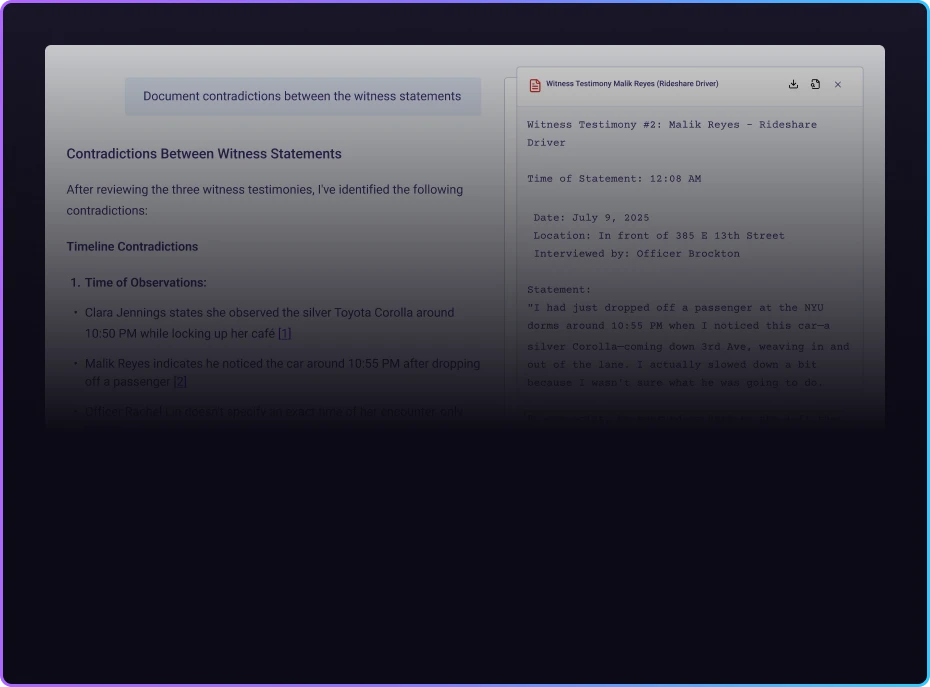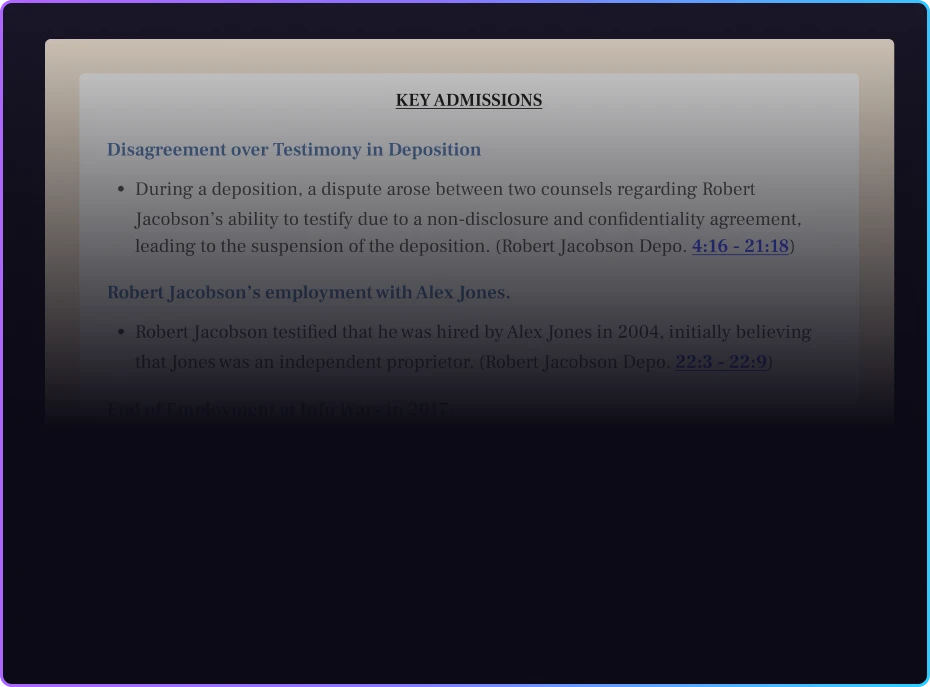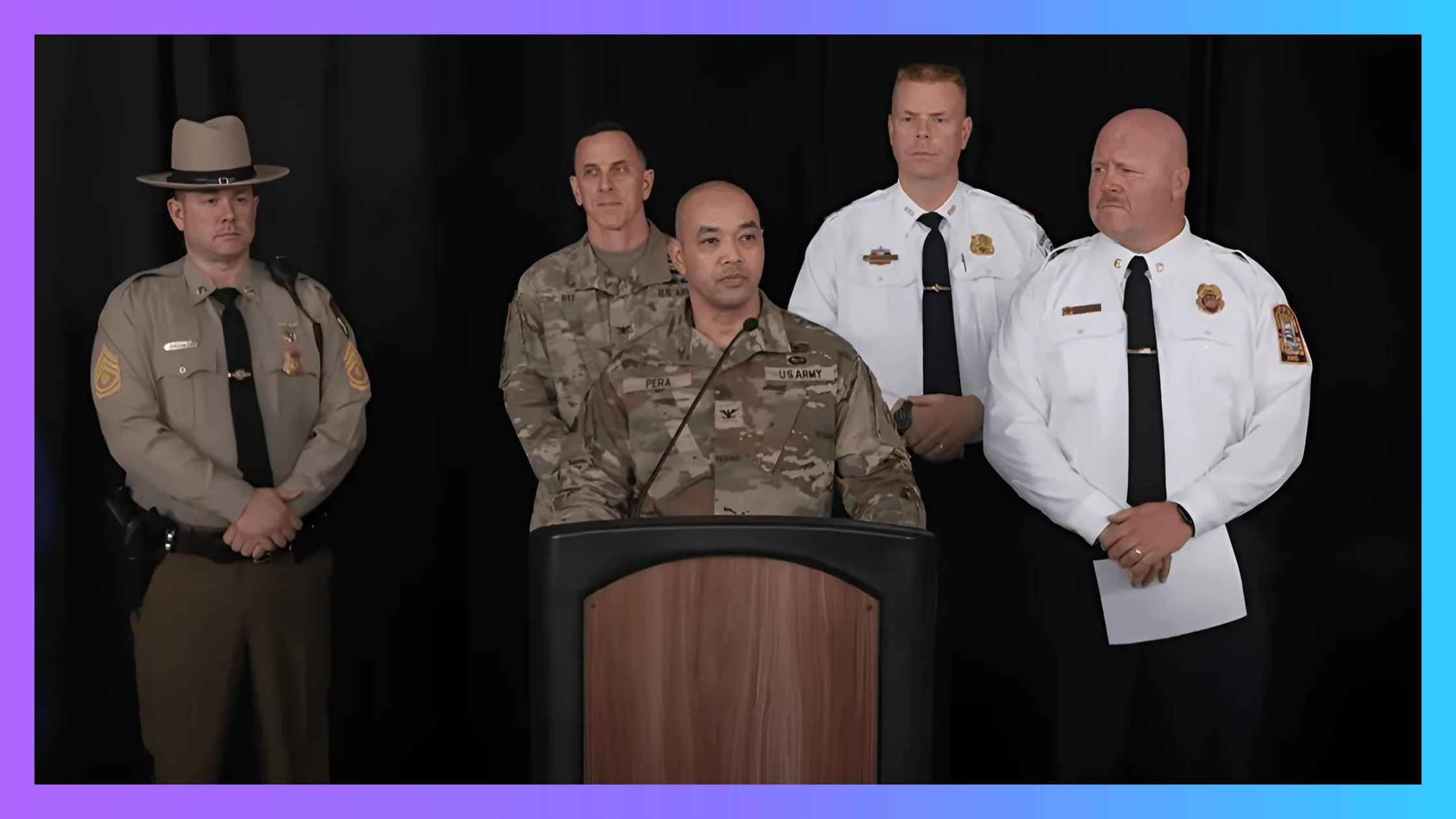Colonel Pera (00:00):
-- yesterday's update as far as our progress on the wreckage recovery for this plane crash here at Reagan National.
(00:07)
We continue to be mindful of those impacted by this tragic incident, the families and the loved ones who lost their lives, but also the first responders and our local, state and federal partners who are working diligently on scene and behind the scenes to support the rescue and recovery efforts.
(00:24)
Yesterday, I provided some insight into our salvage operations as well as the iterative cycle that we've used to make sure that we're doing that in close coordination with Unified Command. Again, our process is committed to the dignified process for recovery of the remains for personnel and passengers of the flight.
(00:45)
As part of today's operations, we did conduct some work stoppages associated with human remains. Assistant Fire Chief Steen can discuss those details further, but I do want emphasize that should any remains be located, we have done and will continue to do an automatic work stoppage until the proper coordination with the appropriate authorities can be conducted.
(01:07)
Today was a very successful day for the most part. We began the effort to clear the wreckage in the Potomac [inaudible 00:01:15] at sunrise, we left Gravelly Point and then began this larger interagency effort. Throughout the day, we've had some success. The first of the two engines was removed at about 10 o'clock this morning. Shortly after that, about noon, we had the fuselage out of the water. And then about 2:30 this afternoon, we began our salvage operations to begin to bring the wing out of the water. Those were our goals for today, the fuselage, the engine, and the wing. We are on our way.
(01:51)
Right now, we anticipate that most of those items will end up on the barge, like we talked about last night, stay overnight in a secured and covered condition until we can make our way to a transport point tomorrow morning. A lot of our operations tomorrow will be dictated by tidal conditions. The barge that we're using has a shallow draft. We're going to wait until high tide, probably close to around 10 o'clock before we can start actually begin transferring those items from the barge over to the transport that will eventually bring them over to hangar seven, and then returning back out to complete our operation.
(02:27)
Over the next 24 hours, our goal is really to complete our commitment to finishing the civilian plane recovery. Tomorrow, our goal is going to be the cockpit. That goal may be impacted tomorrow by a couple of environmental conditions, notably the wind, where we're going to stay conscious of kind of where those gusts and sustained winds are, and we'll make sure that we're communicating that effectively.
(02:49)
We're still committed to our dedicated plan of making sure that we plan, prep, assess before we execute. We're really thankful for all the cooperation that we've had so far from the Unified Command.
(03:01)
Thank you very much, and I'll be standing by for additional questions and I'll be followed by Assistant Chief Steen.
Gary Steen (03:09):
Good afternoon. I'm Assistant Fire Chief Gary Steen. I would like to thank the U.S. Army Corps of Engineers, Colonel Pera and all of our other partners that have been out through this process.
(03:20)
We'd like to now provide an update on the recovery of operations. Throughout the day, our police and fire crews, along with regional partners, have been working closely with the U.S. Army Corps of Engineers on recovery and salvage operations.
(03:33)
As of this update, we have positively identified 55 sets of remains. During recovery and salvage operations today, additional human remains were located. These remains, as well as remains that have been recovered previously are in the process of being positively identified by the Office of the Chief Medical Examiner of the District of Columbia. All of those involved with these efforts continue to work diligently at several sites.
(03:58)
At this point, we will now take questions.
Speaker 3 (04:03):
Yes, sir. You said more remains of folks who died were found today. Sorry, you said more remains of folks who passed away were found today. Do you have an updated number on how many of the 67 have now been found?
Gary Steen (04:16):
No. We're still at 55 positively identified.
(04:22)
Yes, sir.
Speaker 4 (04:24):
Question for Colonel Ott, if I may, sir. We talked yesterday. You said these were experienced pilots, they knew this airspace. Is there any reason why army helicopters would be flying above that two-hundred-foot line as it appears in this case?
Colonel Ott (04:40):
Yeah, so I think it's important for us to not speculate because there are all kinds of reasons that you could deviate from an altitude. If something as simple as a flock of birds is in front of you, or you may deviate if you see something that's an obstacle or other threat to your flight, and so I would wait and caution everybody, let's just wait until the NTSB investigation. I know we all want answers. We want to know also, but all that should come out and we should have a better picture once the cockpit data recorders and that are analyzed. Yep.
Gary Steen (05:26):
Yes, sir.
Skyler Henry (05:28):
Question for you. Skyler from CBS News. I know you were talking about the timeline for the salvage operation. Are you still on track with that given the success today? I know you said that there could potentially be some challenges tomorrow. Could that delay things?
Colonel Pera (05:42):
Yeah, so the questions about whether or not we're concerned about the timeline being delayed for our salvage operations. We do believe that we're on track. I think we were very successful today. Every day we set a goal for what we're trying to accomplish. Our goal for today was to get to the engine, the fuselage, and the wing, and we're going to be successful by the end of the day. Our goal for tomorrow, based on the reduced timeline and the environmental conditions is the cockpit, and we equally think we're going to be successful.
Gary Steen (06:14):
Yes, sir.
Tom Costello (06:15):
Hi, Chief. Tom Costello with NBC News. Could you talk about the emotional toll that this must take on these divers who are in the water and trying to recover the remains of these victims and do it, as you've said over and over again in a dignified manner, but presumably you are dealing with children, parents, and families? I'm just wondering what this does to the divers who are in the water.
Gary Steen (06:43):
So the question was about the emotional toll that this takes on the divers and first responders and even on all of our other partners. So this is tragic and we've had peer support in place since the first hours of the incident to help provide that additional help that they need, and we will continue with that throughout the rest of their careers, if necessary, to provide them that support. But it is tragic. And everything imaginable that you can think of, that is what they're dealing with day in and day out. And we're going to continue to provide support to them.
(07:17)
Yes, sir.
Speaker 3 (07:18):
Can you describe how you came up with this plan to strategically take out each of those elements that you just described?
Colonel Pera (07:29):
Yeah. So the process that we do, and this is typical for most salvage operations, is to ensure that you understand the environment. So there is a series of iterative events that kind of inform the dive and salvage process.
(07:43)
First, like we said, is a wide area scan that gets us down to a localized area. Once we get to that localized area and we're at the wreckage, there's a dive survey that really kind of informs the conditions at that point. Then we have to understand the structure to inform the next part, which is the salvage plan. The salvage plan is really the execution of how we're going to lift that day.
(08:05)
Now, the only change to any of that is the process that we're doing that addresses the human remains that we talked about before, and we've worked that in painstaking detail with the entire interagency and as well as all of our partners within the Unified Command, and we think we've got a great solid plan that we've executed on a number of occasions now successfully as far as the dignified recovery of those remains.
Gary Steen (08:29):
Yes, ma'am.
Speaker 8 (08:29):
Yes. In previous briefings, it was said that in order to recover the rest of the victims, it would require the removal of the wreckage. Is it still believed that the remaining remains, the remaining bodies are within the wreckage at this point?
Gary Steen (08:40):
I believe that is accurate, yes.
(08:45)
Yes, ma'am. Right here.
Speaker 9 (08:50):
Similar question.
Gary Steen (08:50):
Okay.
Speaker 10 (08:51):
Anyone? I don't see anyone.
(08:51)
All right. Thank you, everybody.
Gary Steen (09:04):
Thank you.
Speaker 11 (09:05):
[inaudible 00:09:05]. Enjoy your evening. Thank you, Perry.
Speaker 10 (09:07):
No problem.
(09:07)
Any other clarifying? [inaudible 00:09:09] anything? I think if the reporters want to come over here with me again.









